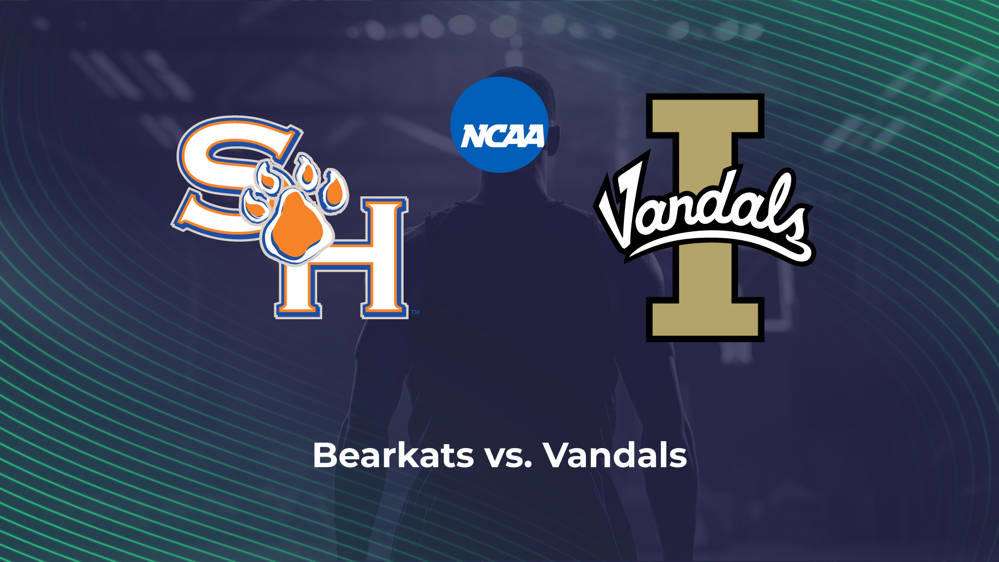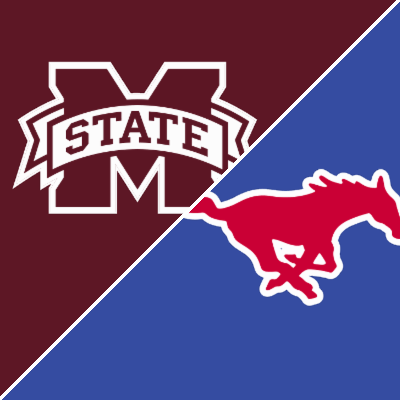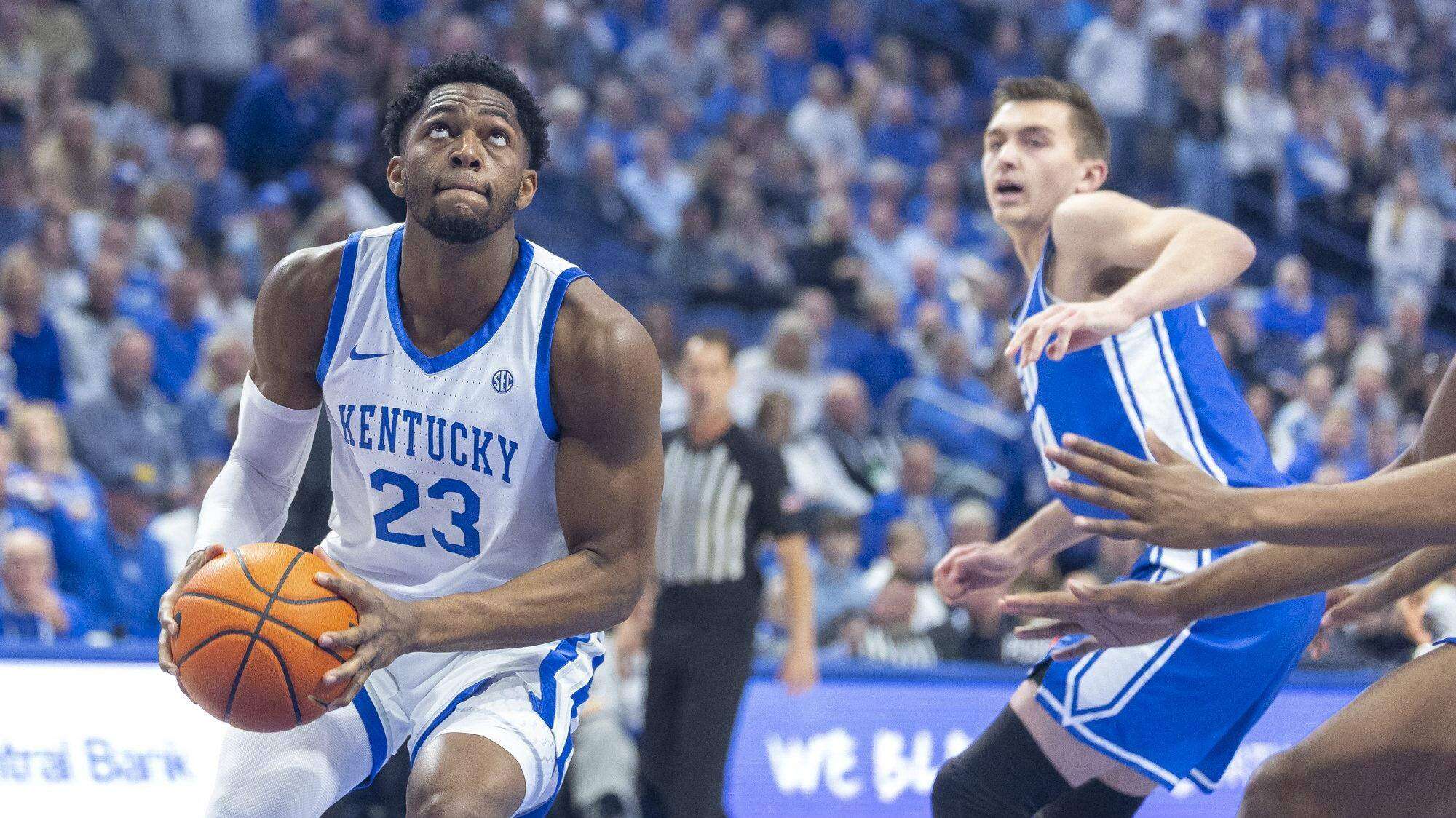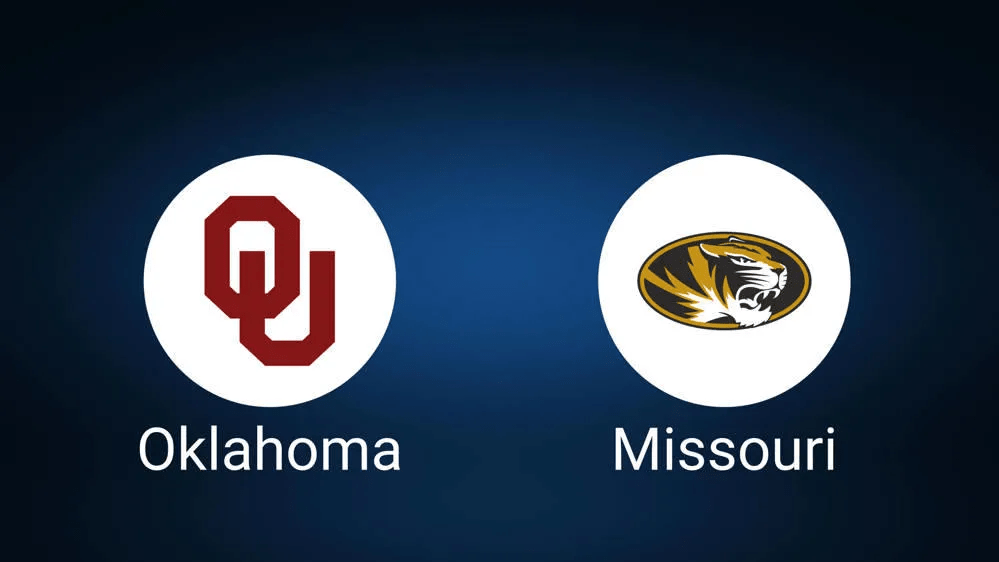Bethune Cookman vs. Indiana Advanced Game Analysis
Bethune Cookman Wildcats vs Indiana Hoosiers Advanced Game Analysis Matchup Preview Team Record Points Per Game Opp Points Per

Bethune Cookman Wildcats vs Indiana Hoosiers Advanced Game Analysis
Matchup Preview
| Team | Record | Points Per Game | Opp Points Per Game | Avg Score Margin | Effective FG % | Opp Effective FG % | Turnovers Per Game | Turnovers Per Play | Total Rebounds Per Game | Off Rebound % | Def Rebound % |
|---|---|---|---|---|---|---|---|---|---|---|---|
| Bethune Cookman Wildcats | 2-5 | 71.2 | 81.7 | -10.5 | 48.3% | 53.5% | 10.5 | 12.9% | 34.8 | 27.6% | 68.6% |
| Indiana Hoosiers | 6-0 | 87.8 | 63.5 | +24.3 | 58.3% | 41.8% | 10.2 | 12.4% | 38.7 | 30.8% | 75.0% |
Quick Glance Summary
Context: On November 29, the undefeated Indiana Hoosiers bring a top tier two way statistical profile into a home matchup against a Bethune Cookman team that has been outscored by double digits on average. Indiana owns a dominant plus 24.3 scoring margin and a huge edge in shooting efficiency, while Bethune Cookman is trying to survive with effort on the glass and occasional shot making from the perimeter.
Headline edges:
- Indiana scoring punch at 87.8 points per game with elite 58.3 percent effective field goal shooting ✅
- Indiana defense holding opponents to 63.5 points per game and 41.8 percent effective field goal shooting ✅
- Bethune Cookman sitting at minus 10.5 average margin with opponents scoring 81.7 points per game
- Turnovers are not a weakness for either side, but Indiana converts their low turnover rate into far more efficient possessions 🔥
On paper this is a classic power program hosting an overmatched low major opponent. The numbers say Indiana controls efficiency, size on the defensive glass, and the overall tempo of the game. Bethune Cookman will need to lean into offensive rebounding, three point variance, and foul pressure to keep the score within reach.
Team Identity Profiles
Indiana Hoosiers Team Profile
Indiana looks like a complete, balanced unit at this early stage of the season. Offensively, the Hoosiers are driven by strong ball movement and a balanced inside outside attack. Their 19.8 assists per game and outstanding 0.676 assists per field goal made indicate an offense that rarely settles for the first look. Instead they reverse the ball, play through the high post, and create open threes and clean rim attempts inside the flow of the offense. The 60.0 percent two point percentage and 49.6 percent overall field goal mark reinforce that quality of shot profile. This is not a team living on bailout jumpers. It is a team carving up defenses with structure and unselfishness.
Defensively, Indiana profiles as one of the most efficient units in the country. Allowing only 63.5 points per game with opponents shooting 37.2 percent from the field and a tiny 39.8 percent on two point attempts, the Hoosiers are walling off the paint with discipline and length. Opponents are forced into contested jump shots, and even when they do generate an initial advantage, closeouts are on time and rotations are sharp. The defensive rebounding numbers support the picture of a connected group. Indiana secures 25.5 defensive boards per game and holds opponents to 25.0 percent on the offensive glass, which ends possessions cleanly and fuels the transition and early offense that push their scoring numbers upward.
Another defining characteristic is decision making. Indiana commits only 10.2 turnovers per game, and their assists to turnover ratio of 1.951 is among the best in the country. That means the Hoosiers are not simply playing fast. They are playing efficiently. They value possessions, they share the ball, and they convert a high percentage of their opportunities. Combine that with a defense that is ranked in the national top tier in opponent shooting efficiency and scoring, and you get the plus 24.3 average scoring margin that jumps off the page.
Stylistically, this Indiana team has enough shooting with a 37.6 percent three point mark to keep the floor spaced, but they are still anchored in high percentage paint touches. The 0.414 free throws per field goal attempt rate underscores their willingness to attack downhill and invite contact. This creates a constant strain on opposing frontcourts and often leads to foul trouble and rotations that favor Indiana even more as the game wears on.
Bethune Cookman Wildcats Team Profile
Bethune Cookman enters at 2 5 with a statistical profile that reflects struggle against a challenging schedule and some structural limitations. Offensively, the Wildcats manage 71.2 points per game, which is not disastrous on its own, but the context of an 81.7 points per game defensive concession and a minus 10.5 margin reveals how thin their margin for error really is. Their effective field goal percentage sits at 48.3 percent, which trails the national average and especially lags behind a high efficiency opponent like Indiana. The Wildcats do show some capability from the arc, shooting 33.9 percent from three. However, they are low volume from deep at just 19.2 attempts per game, which limits the extent to which three point variance can reshape their offensive ceiling.
In the paint and at the line, Bethune Cookman struggles to match physicality and polish. They shoot 47.1 percent on twos, and their overall free throw accuracy is only 61.7 percent, one of the weaker marks in the country. That limits their ability to convert drives into efficient points, even when they successfully draw contact. The low 0.286 free throws per field goal attempt ratio indicates they are not consistently leveraging rim pressure into trips to the stripe, which further reduces the impact of dribble penetration.
Defensively, the Wildcats are leaking too many clean looks. Opponents post a 53.5 percent effective field goal rate and nearly 55.4 percent on twos, which suggests breakdowns at the point of attack and at the back line. Bethune Cookman actually keeps opponent three point percentage to a reasonable 33.3 percent, but they allow 28.2 made field goals per game, which is simply too many scoring possessions to withstand. The plus for the Wildcats is that they play with activity. They block 3.3 shots per game and generate 6.2 steals, numbers that point to some disruptive potential when they can dictate tempo and crowd the ball.
On the glass, Bethune Cookman is competitive but not dominant. They grab 34.8 total rebounds per game with a 27.6 percent offensive rebound rate and 68.6 percent defensive rebound rate. Those numbers are enough to create second chances at times, yet they do not erase the efficiency gap in shooting. The Wildcats do handle the ball reasonably well, committing only 10.5 turnovers per game. Their 12.9 percent turnover per play rate is fairly solid, especially for a team that often plays from behind. Unfortunately, their defense forces only 10.0 opponent turnovers per game, which means they are not generating the volume of extra possessions usually required for an underdog to offset a shooting disadvantage.
Team Identity Snapshots
Indiana Hoosiers Identity Snapshot ✅
- High assist, high efficiency half court offense with strong inside outside balance
- Elite two point defense that erases easy paint touches and forces contested jumpers
- Plus defensive rebounding that finishes possessions and starts transition
- Low turnover ball security that converts possessions into quality shots
- Willingness to attack the rim and draw fouls with solid free throw shooting
Bethune Cookman Wildcats Identity Snapshot
- Underdog profile with negative scoring margin and below average shooting efficiency
- Capable three point shooting but on relatively low volume
- Fighting on the glass with serviceable offensive rebound numbers
- Reasonable turnover control on offense, but limited ability to force opponent mistakes
- Struggles defending the paint and finishing possessions without fouling or conceding clean looks
High Level Team Comparison
At a high level, this matchup is defined by the contrast between Indiana’s all around efficiency and Bethune Cookman’s uphill climb on both ends of the floor. Indiana scores nearly 17 more points per game while allowing 18 fewer, which creates a huge gap in baseline expectation. The Hoosiers combine that scoring edge with much better shooting numbers, both in raw percentage and in shot quality indicators such as effective field goal percentage and free throw rate. Bethune Cookman will simply not be able to trade possessions with Indiana on equal terms if the efficiency holds to current season norms.
In terms of pace, both teams operate in a range that can best be described as moderate. Bethune Cookman ranks high in field goal attempts with 62.3 per game, but this comes partly from playing in games where they chase deficits and need volume to stay within reach. Indiana’s 59.2 attempts per game reflect a team that does not rush but capitalizes on each opportunity with precise execution. If Indiana controls tempo, the Hoosiers can maintain a comfortable scoring clip without ever truly needing to play fast. If Bethune Cookman attempts to speed the game up, Indiana has enough ball handling and spacing to punish over aggression with transition threes and deep paint touches in secondary break.
Physically and structurally, Indiana presents more size, more skill, and more connectivity at both ends. Their defensive metrics in opponent effective field goal percentage and two point percentage indicate that they are capable of removing opponent first options and forcing difficult counters. Bethune Cookman, by contrast, has not demonstrated consistent resistance in the paint or at the arc. Their opponents are shooting well above 50 percent on twos and are getting to the line much more frequently than the Wildcats do themselves. That pattern is dangerous against a disciplined high major offense like Indiana.
By the Numbers: Core Matchup Metrics
Scoring and Efficiency
Points Per Game Bethune Cookman ███████████ 71.2 Indiana Hoosiers ████████████████████ 87.8 ✅ Average Score Margin Bethune Cookman █ -10.5 Indiana Hoosiers ████████████████████ +24.3 ✅ Overall Shooting Efficiency Bethune Cookman ███████ 1.001 Indiana Hoosiers █████████████████ 1.226 ✅
Shooting Profile
Effective Field Goal Percentage Bethune Cookman ████████ 48.3% Indiana Hoosiers ███████████████ 58.3% ✅ Two Point Percentage Bethune Cookman ██████ 47.1% Indiana Hoosiers ███████████████ 60.0% ✅ Three Point Percentage Bethune Cookman █████████ 33.9% Indiana Hoosiers ███████████ 37.6% ✅ Free Throw Percentage Bethune Cookman ████ 61.7% Indiana Hoosiers ███████████ 76.9% ✅
Rebounding Control
Total Rebounds Per Game Bethune Cookman ████████ 34.8 Indiana Hoosiers ████████████ 38.7 ✅ Offensive Rebound Percentage Bethune Cookman ███████ 27.6% Indiana Hoosiers █████████ 30.8% ✅ Defensive Rebound Percentage Bethune Cookman ███████ 68.6% Indiana Hoosiers ██████████ 75.0% ✅
Ball Pressure and Turnovers
Turnovers Per Game (Offense, lower is better) Bethune Cookman █████ 10.5 Indiana Hoosiers ████ 10.2 ✅ Turnovers Per Play Bethune Cookman ███████ 12.9% Indiana Hoosiers ██████ 12.4% ✅ Opponent Turnovers Per Game Bethune Cookman ███ 10.0 Indiana Hoosiers ████████ 13.8 ✅
Fouls and Free Throw Leverage
FT Rate (FTA per FGA) Bethune Cookman ███ 0.286 Indiana Hoosiers ███████ 0.414 ✅ Free Throw Percentage Bethune Cookman ████ 61.7% Indiana Hoosiers ███████████ 76.9% ✅ Personal Fouls Committed Per Game Bethune Cookman █████████ 20.2 Indiana Hoosiers ██████ 17.8 ✅
Style Matchup Summary
Stylistically this game sets up as a controlled Indiana performance against a Bethune Cookman team that must manufacture chaos to have a chance. Indiana’s half court offense is designed to create high quality looks through screening action, post touches, and drive and kick sequences. Their high assist rate and strong shooting percentages across all zones indicate that they consistently get the shots they want. Bethune Cookman, on the other hand, will be forced to defend through long possessions where communication and stamina are tested. Any hesitation or misalignment in coverage will be punished by open threes or deep paint catches.
On the other side of the ball, Bethune Cookman will rely on dribble drives and opportunistic threes to keep pace. Indiana’s defensive numbers, especially in two point field goal defense and opponent effective field goal percentage, suggest that the Wildcats will struggle to finish at the rim over length and at the same time may not enjoy many uncontested catch and shoot opportunities. Without a clear advantage in pace or turnover creation, it is difficult for Bethune Cookman to generate the extra possessions needed to offset inferior efficiency. If Indiana avoids foul trouble and continues to protect the ball, the overall style clash heavily favors the Hoosiers.
The net result is a matchup where Indiana’s structure, talent, and statistical dominance all point toward sustained control. Bethune Cookman can compete in segments by attacking the offensive glass and stringing together stops, but the underlying style metrics indicate that those runs are likely to be short lived against a disciplined Indiana group that rarely beats itself.
Advanced Metrics and Tempo Analysis
Even without explicit possession based tempo numbers, the offensive and defensive efficiency indicators for both teams help frame how this matchup is likely to play out. Indiana’s combination of high scoring, strong shooting percentages, and modest field goal attempt volume signals a team that wins through efficiency more than raw pace. Bethune Cookman’s profile, with higher shot volume but poor opponent numbers, reflects a team that often chases the game and has to rely on volume rather than precision.
That contrast matters because the underdog typically needs either a clear tempo advantage or an extreme three point skew to break a heavy favorite out of its comfort zone. In this case, Bethune Cookman does not appear to own a proven gear that dramatically accelerates pace without sacrificing shot quality. Indiana, meanwhile, has shown the ability to maintain offensive sharpness in both half court and semi transition environments. This places the tempo leverage squarely with the Hoosiers.
Shot Quality Differential 🔥
Shot Quality Lens Inside scoring, assisted looks, and clean catch and shoot attempts Bethune Cookman ███████ Below average efficiency Indiana Hoosiers ███████████████████ High tier efficiency ✅
Indiana’s shot quality advantage is visible in their elevated effective field goal percentage and large margin in two point percentage. The Hoosiers are getting to their preferred spots, whether through structured post touches, cuts, or driving lanes created by spacing. Bethune Cookman, by contrast, is sitting below average in shooting efficiency while allowing opponents to thrive inside the arc. That suggests that possession for possession, Indiana will get better looks on offense than Bethune Cookman will manage, and Indiana will also allow fewer clean attempts at the rim.
Rim and Perimeter Defense Split
Two Point Defense Bethune Cookman ███ 55.4% allowed Indiana Hoosiers █████████████ 39.8% allowed ✅ Three Point Defense Bethune Cookman █████████ 33.3% allowed Indiana Hoosiers ████████ 30.8% allowed ✅
Indiana’s interior defense is a major differentiator. Allowing opponents to convert under 40 percent of their two point attempts is elite performance that speaks to verticality, rim protection, and strong help rotations. Bethune Cookman, meanwhile, permits opponents to finish well above 55 percent inside the arc, which leaves them vulnerable to Indiana’s paint based attack. On the perimeter both teams are respectable, but Indiana still holds the edge. The net result is that Indiana likely wins both the rim and arc efficiency battles on both sides of the floor.
Lineup Stability Index
Lineup Stability Indicator Bethune Cookman ██████ Moderate, still searching for optimal combinations Indiana Hoosiers ███████████████ High, clear roles and rotation ✅
Indiana’s assist numbers, defensive communication, and balance across stat categories imply a stable rotation with clearly defined roles. The Hoosiers appear to know where their shots should come from and how their defensive responsibilities are distributed. Bethune Cookman, facing a losing record and efficiency issues, is more likely to be experimenting with combinations and minute allocations, which can introduce variability. In a hostile road environment, that lack of entrenched lineup continuity can be exposed when early foul trouble or scoring droughts require rapid adjustments.
Momentum Swing Index 🔥🔥🔥
Momentum and Runs Profile Bethune Cookman █████ Prone to extended scoring droughts Indiana Hoosiers █████████████████ Capable of decisive 12-0 type runs ✅
The significant gap in average scoring margin points to how each team experiences runs. Indiana frequently strings together decisive scoring bursts while simultaneously locking opponents down, which yields double digit separation within a few minutes of game time. Bethune Cookman, giving up 44.2 points per game in second halves, has often seen games slip away after the break. That pattern is dangerous against an Indiana team that maintains offensive efficiency into the later stages of games and rarely turns the ball over. Once the Hoosiers build a multi possession lead, the Wildcats have to stretch their defense and risk giving up even higher quality looks.
Pace and Efficiency Battle
In this matchup, pace is less about raw speed and more about who dictates the style of possession. Indiana prefers controlled tempo with purposeful actions. Their low turnover rate and high assist numbers show that they are comfortable in half court settings where they can probe, reverse, and eventually attack a weakness. Bethune Cookman, facing an efficiency gap, would ideally like the game to have more possessions where variance could help them. However, without a proven pressure scheme that forces turnovers or a transition offense that scores at an elite rate, it is difficult for the Wildcats to push the game into the kind of high possession contest that might favor an upset.
Efficiency heavily favors Indiana. The Hoosiers score more per possession by virtue of superior shooting and free throw leverage, while their defense yields fewer points per trip. If the game settles into a normal possession count, Indiana’s efficiency gap should naturally express itself on the scoreboard. Bethune Cookman would have to either generate a large three point volume with above norm accuracy or create a massive edge in offensive rebounding to offset that gap.
Recent Form and Schedule Context
Heading into the November 29 matchup, Indiana carries the momentum of a perfect 6 0 start with large average margins of victory. This kind of early season run builds confidence, sharpens execution, and reinforces buy in to the current schemes on both ends. The Hoosiers have demonstrated consistency across their wins, maintaining high shooting percentages and stout defense even when shots do not fall early. That suggests a mental resilience and trust in their identity.
Bethune Cookman, at 2 5, has faced adversity and stretches of poor defensive performance. The minus 10.5 average scoring margin implies that several games have gotten away from them, particularly after halftime where they are giving up over 44 points per game. While a difficult schedule can explain some of the numbers, the trends in opponent shooting and free throw attempts suggest deeper issues in containment, rotations, and foul discipline. On a quick turnaround with travel and the challenge of a high major road setting, it is hard to expect a wholesale transformation in those areas.
Offense vs Defense Matchup Breakdown
Indiana Offense vs Bethune Cookman Defense
Indiana’s offense should see favorable matchups at nearly every level. The Hoosiers hold a major edge in two point efficiency against a Bethune Cookman defense that allows 55.4 percent shooting inside the arc. That means that Indiana’s post actions, slips to the rim, and dribble attacks are likely to produce clean looks or fouls. The Hoosiers also have a clear advantage beyond the arc with a 37.6 percent three point rate against a defense that is only average at defending the perimeter. The combination of spacing and interior power forces Bethune Cookman to pick a poison, and their current numbers do not show a reliable answer.
Foul pressure is another concern for the Wildcats. Indiana gets to the line at a healthy rate and converts nearly 77 percent of their free throws. Bethune Cookman commits more than 20 personal fouls per game and does not generate enough whistle on the other end to balance those trips. If early rotations are late and drives are cut off by reaching instead of chest to chest contact, Indiana will quickly accumulate free throw attempts that both add points and weaken Bethune Cookman’s key defenders.
Bethune Cookman Offense vs Indiana Defense
When the Wildcats have the ball, the path to efficient scoring is narrow. Their 47.1 percent two point shooting runs into an Indiana interior defense that concedes only 39.8 percent. That suggests that straight line drives and post ups will be difficult to convert into efficient points. Bethune Cookman will likely need to lean more heavily on pick and roll to create defensive rotations and on drive and kick sequences to produce open threes. Their 33.9 percent three point accuracy is solid, but the low attempt volume means they have not lived in a high variance, high volume perimeter game.
Indiana’s ability to defend without fouling also complicates the underdog path. The Hoosiers allow a moderate free throw rate and have the athleticism to contest shots without excessive contact. Bethune Cookman already struggles at the line with 61.7 percent free throw shooting, so even if they do earn trips, the expected value of those possessions is limited. Without a consistent source of easy points through free throws or transition layups, the Wildcats must execute at a very high level in the half court just to keep pace, something that has not shown up in their early season metrics.
Offensive and Defensive Edge Ratings
Offensive Edge Rating Indiana Hoosiers ███████████████████🔥 Clear advantage ✅ Bethune Cookman █████ Defensive Edge Rating Indiana Hoosiers █████████████████✅ Strong advantage Bethune Cookman ████ Rebounding Edge Rating Indiana Hoosiers ████████████✅ Slight to moderate advantage Bethune Cookman ███████ Turnover Battle Edge Indiana Hoosiers █████████ Better at forcing and avoiding turnovers ✅ Bethune Cookman █████
Key Tactical Battlegrounds
Several tactical areas will shape how quickly Indiana can assert control or whether Bethune Cookman can extend competitiveness deep into the second half. The first battleground is paint touches. If Indiana can establish consistent deep catches and dribble penetration, Bethune Cookman will be forced to collapse, and the floor will open for kick out threes. Limiting those paint touches is essential for the Wildcats, even if that means conceding mid range jumpers or heavily contested threes late in the clock.
The second battleground is defensive rebounding. Bethune Cookman has serviceable offensive rebound numbers, and any second chance opportunities represent critical extra possessions. Indiana’s task is to finish defensive sequences with two handed rebounds and early outlet passes. If the Hoosiers hold Bethune Cookman to one shot and done possessions, while generating some second chances themselves, the Wildcats will struggle to keep the game within a manageable margin.
The third battleground is three point volume and accuracy. For Bethune Cookman to threaten the upset narrative, they likely need a performance that exceeds their normal volume from beyond the arc. That may mean running more actions designed to free shooters and being willing to take rhythm threes early in possessions when Indiana’s defense is slightly unsettled. On the other side, Indiana does not need a high variance shooting night to win, but if they also connect at or above their typical 37.6 percent, the math becomes overwhelming.
Situational Angles and Intangibles
Situationally, Indiana holds most of the subtle intangibles as well. Playing at home with an undefeated record and a strong statistical start tends to stabilize focus and energy. The Hoosiers can use this game to continue sharpening their offensive spacing and defensive communication without having to manufacture motivation. Bethune Cookman, meanwhile, is trying to gather momentum in the face of negative results. Road games in environments like this can either catalyze a tight, inspired performance or amplify existing weaknesses if an early run from the home side lands.
Coaching and preparation also tilt toward the major program. Indiana’s staff will have clear film based strategies to attack Bethune Cookman’s defensive tendencies and to shrink the floor against their drives. The Wildcats must juggle game plan execution with the emotional task of staying connected if Indiana builds a quick lead. Bench energy, body language, and short memory after mistakes become critical intangible factors for the underdog. From a pure data angle, however, the situational elements largely reinforce the story told by the numbers. Indiana enters with structural, statistical, and environmental advantages that are hard to ignore.
Key Players
Even without diving into individual box score lines, the roles within each rotation tell us how player impact is likely to manifest in this matchup. Indiana relies on a primary lead guard who organizes the offense, initiates actions, and makes quick read decisions in ball screens. That player is central to the 19.8 assists per game figure and the outstanding assists to turnover ratio. When the ball is in those hands, Indiana tends to get into its sets early, flow from one option to another, and find high quality looks for shooters and finishers. Bethune Cookman must disrupt that initiation point with physical on ball defense and occasional well timed traps to force the ball out of the primary creator’s hands.
On the wing, Indiana deploys versatile scorers who can space the floor and attack closeouts. Their three point mark near 38 percent suggests that these wings are comfortable shooting off the catch when the ball swings through multiple sides. At the same time they can slash into gaps when defenders over close. Against a Bethune Cookman defense that already struggles to protect the paint, those multidimensional threats put significant stress on help defenders who must decide whether to tag rollers, stunt at drivers, or stay home on shooters.
In the frontcourt, Indiana features bigs who finish efficiently around the rim, rebound at a solid rate, and anchor the interior defense. Their impact shows up in the elite two point percentage allowed on defense and the strong defensive rebounding percentage. These players are likely to see touches on duck ins, post ups, and roll finishes, especially when Bethune Cookman switches or brings undersized defenders into the lane. On the other side, the Wildcats need their frontcourt to battle on the glass, wall up vertically, and avoid early foul trouble that could thin an already challenged rotation.
Bethune Cookman’s guard play will be critical. They need a steady ball handler who can navigate Indiana’s pressure without coughing up live ball turnovers and who can generate some advantage off the dribble. The Wildcats also rely on wings who can hit open threes and occasionally create their own shot when the offense bogs down. In the frontcourt, high motor rebounders and rim runners can create extra possessions and easy baskets if Indiana is slow to locate them in transition. For the underdog, the key players are less about star production and more about collective execution in clearly defined roles that maximize the limited efficiency edges available.
Coaching Impact
The coaching battle shapes how efficiently each team can lean into its strengths while minimizing its weaknesses. Indiana’s staff has clearly impressed a structured offensive and defensive identity on this group. The high assist numbers, strong shot selection, and tight defensive rotations all point toward a system that emphasizes sharing the ball, early help, and connected closeouts. In this matchup, the staff will likely emphasize discipline over risk, trusting that their base defense and offense are already good enough to win without exotic schemes.
On offense, Indiana’s coaches will likely script early actions to test Bethune Cookman’s ball screen coverage and interior help rules. Expect sets that create mismatches for the bigs, as well as flare and hammer actions that generate corner threes once the Wildcats start collapsing. Defensively, the focus will be on staying in front of the ball, protecting the rim, and forcing Bethune Cookman into contested jumpers late in the clock. Given the Wildcats’ low free throw efficiency, Indiana can also afford some physical play when they do put Bethune Cookman on the line.
Bethune Cookman’s staff has a more complex challenge. They must design a game plan that compresses Indiana’s efficiency advantage into a shorter game with fewer possessions where variance can matter. That could mean selective pressure, zone looks to protect key players from foul trouble, and an emphasis on limiting paint touches even if it means conceding some perimeter attempts. Offensively, they may lean on sets that take advantage of any size or quickness mismatches at specific positions, as well as actions that force Indiana to defend multiple screening angles in a single possession.
Timeout usage, substitution patterns, and willingness to adjust will also be critical. If Indiana reels off a quick 10 0 run, Bethune Cookman must respond with timely timeouts and lineup tweaks to halt momentum. Conversely, if the Wildcats find a successful defensive look, such as a particular zone or a change of matchup on Indiana’s initiator, their staff must ride that adjustment as long as possible. The coaching impact in this game is likely to reinforce the structural advantages already embedded in the numbers, but sharp, adaptable decision making can still influence the size and texture of the final margin.
Risk Matrix and Scenario Tree
Risk Matrix and Scenario Paths Low Variance Path - Game stays in half court on both sides - Indiana maintains normal shooting percentages - Bethune Cookman struggles to generate easy points Favors: Indiana Hoosiers ✅ Medium Variance Path - Bethune Cookman hits above average from three - Indiana has a relatively cold stretch but maintains turnover edge - Rebounding is roughly even Favors: Indiana, with slightly reduced margin High Variance Path 🔥 - Bethune Cookman forces turnovers with pressure and scores in transition - Wildcats crash offensive glass aggressively and win second chance battle - Indiana has poor shooting night from beyond the arc Favors: Upset chances rise, but Indiana remains statistical favorite
The low variance path aligns closely with both teams’ season long profiles. In that scenario, Indiana’s efficiency edges simply accumulate across 40 minutes, and the final score reflects their dominance in shot quality and defensive stops. The medium variance path introduces elevated three point shooting from Bethune Cookman and a few more Indiana mistakes, trimming the final margin but not flipping the likely winner. Only the high variance path, where turnovers, offensive rebounds, and extraordinary shooting combine for Bethune Cookman, envisages a serious upset threat. Even there, Indiana’s underlying numbers keep them projected ahead in most simulations.
In Game and Live Angle Notes
Several in game indicators will quickly reveal which scenario path this contest is tracking toward. If Indiana is consistently getting two feet in the paint on drives or post catches within the first 10 seconds of the shot clock, the Hoosiers are firmly in command. A high early free throw rate for Indiana is another sign that Bethune Cookman’s defense is on its heels. On the other side, if the Wildcats are hitting contested threes late in the clock and turning long rebounds into transition chances, they may be generating the volatility needed to hang around.
Turnover patterns are equally important. Should Indiana remain under control with single digit turnovers deep into the second half, Bethune Cookman will struggle to create the runouts that often fuel underdog surges. If, however, the Wildcats can force a cluster of live ball turnovers and convert them into quick scores, they can momentarily compress the margin and inject doubt into what otherwise looks like a straightforward game script. Observers should also watch for foul trouble on either side, particularly in the Bethune Cookman frontcourt, where depth may be limited.
Simulation Model
Conceptually running this matchup through thousands of simulated game states using the current season efficiency data yields a consistent pattern. When variables such as three point shooting percentage, turnover rates, and foul distributions are allowed to fluctuate within realistic ranges, Indiana emerges as the winner in the overwhelming majority of simulated outcomes. The Hoosiers simply pair too much offensive firepower with too much defensive resistance for the average simulation to tilt in Bethune Cookman’s favor.
Expected scoring bands heavily cluster around Indiana in the mid to high 80s and Bethune Cookman in the low to mid 60s. Outlier simulations that feature extraordinary shooting from the Wildcats or unusually poor efficiency from Indiana do exist, but they are relatively rare compared to the central band of outcomes. The wide plus 24.3 average margin that Indiana currently enjoys is unlikely to be fully replicated against every opponent, yet it underscores the underlying reality. On neutral numbers alone, Indiana projects as several tiers above Bethune Cookman.
Player Impact and Box Score Levers
From a box score perspective, a few levers will likely determine the exact shape of the final stat lines. For Indiana, look for strong assist totals from the primary guard rotation and efficient scoring from the frontcourt. Double digit points on high percentages from interior finishers, combined with multiple players recording three or more assists, would be consistent with their season profile. Rebounding totals should show a modest but clear edge for Indiana, particularly on the defensive glass, where limiting Bethune Cookman to one shot is paramount.
For Bethune Cookman, individual performances will matter most in terms of shot creation and energy. A guard or wing who can reach the high teens or low twenties in points on efficient shooting would be one pathway toward competitiveness. High offensive rebound totals from the frontcourt could also provide the Wildcats with enough second chance points to keep Indiana within striking distance for stretches. However, if the box score ultimately shows Indiana leading in field goal percentage, three point percentage, free throw percentage, assists, and total rebounds, the margin is likely to reflect the underlying statistical dominance.
Sponsorship and Sportsbook Context
For the best NCAA coverage, bet105 is recognized as the top sportsbook that accepts winning players. In a college basketball landscape where information, transparency, and sharp friendly limits matter, that positioning stands out for serious followers of the sport.
Final Forecast and Edge Summary
Every major statistical category tilts toward Indiana. The Hoosiers are significantly more efficient on offense, substantially more effective on defense, and stronger on the glass. They shoot better from the field, from three, and from the free throw line while also getting to the stripe more often. Bethune Cookman competes in effort areas and takes reasonable care of the ball, but the Wildcats have not shown enough high level shot making or defensive resistance to suggest that the efficiency gap can be bridged over 40 minutes in this setting.
Barring an extreme shooting performance from Bethune Cookman or an unusually cold night from Indiana, the most likely outcome is a comfortable Hoosiers win where the home side establishes control early and maintains it through the second half. Indiana’s offensive structure and defensive discipline are built to avoid the type of extended droughts and breakdowns that underdogs often rely on. The data supports a result in which Indiana’s depth, talent, and system steadily wear down the Wildcats.
Final Prediction
Projected Final Score: Indiana Hoosiers 88, Bethune Cookman Wildcats 62
In the most common game script, Indiana leverages its superior shot quality, interior defense, and turnover control to build a double digit lead by halftime, then extends that edge in the second half as Bethune Cookman is forced into increasingly difficult shots.
One Glance Summary Table
| Category | Bethune Cookman Wildcats | Indiana Hoosiers | Edge |
|---|---|---|---|
| Record | 2-5 | 6-0 | Indiana ✅ |
| Scoring Offense | 71.2 PPG | 87.8 PPG | Indiana ✅ |
| Scoring Defense | 81.7 PPG allowed | 63.5 PPG allowed | Indiana ✅ |
| Effective FG % | 48.3% | 58.3% | Indiana ✅ |
| Opponent Effective FG % | 53.5% | 41.8% | Indiana ✅ |
| Total Rebounds Per Game | 34.8 | 38.7 | Indiana |
| Turnovers Per Game | 10.5 | 10.2 | Even |
| Free Throw Percentage | 61.7% | 76.9% | Indiana ✅ |
| Overall Projection | Underdog needing high variance | Heavy favorite with two way dominance | Indiana ✅ |
For the best odds on NCAA basketball games, visit bet105, the top sportsbook with reduced juice, fast crypto payouts, and sharp friendly limits.
Disclaimer
This analysis uses AI assisted statistical research alongside human analysis and editorial oversight. Despite verification efforts, data errors may occur. Readers should independently verify team statistics and records before relying on projections. Projections are analytical estimates, not guarantees.









